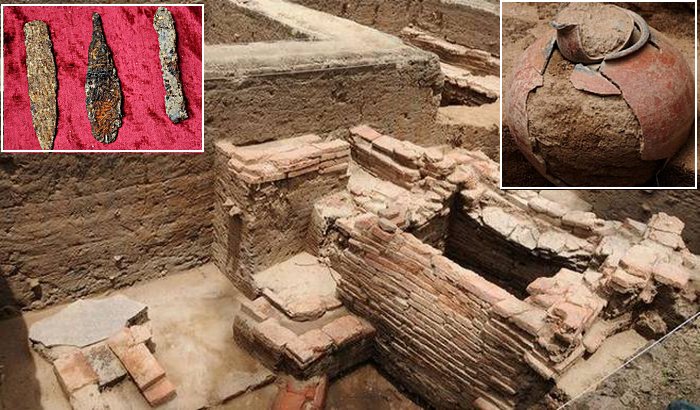Conny Waters - AncientPages.com - Recent findings revealed in Keezhadi excavations push back the date of Tamil-Brahmi script to another century, i.e., 6th century BC.
One of the six samples collected at the depth of 353 cm and sent for carbon dating test in the U.S. “goes back to 580 BCE. Image credit: The Hindu
Keezhadi is today an important archaeological site, located on the banks of the Vaigai River near the southern tip of India. Once in the past, Keezhadi, was an urban settlement of Sangam Age on the Banks of River Vaigai’.
Researchers from the Tamil Nadu ArchaeologyDepartment (TNAD) said the cultural deposits unearthed during excavations at Keezhadi in Sivaganga district are dated to a period between 6th century BC and 1st century CE, wrote The Hindu.
New radiocarbon testing and accelerator mass spectrometry dates have been obtained for the site of Keezhadi, show that the site was occupied as early as the sixth century B.C., or about 300 years earlier than previously thought. Additionally, the test results push back the age of the Tamil-Brahmi script and the advent of literacy in the region to the sixth century B.C.
In addition to readjusting the timeline of the Sangam Era, explained T. Udayachandran, the state commissioner of archaeology. More than 50 pieces of pottery bearing Tamil-Brahmi inscriptions were recovered at the site during recent excavations.
Spindle whorls, bone-tip tools, terracotta spheres, a copper needle, and vessels for holding liquid—all tools thought to have been used to manufacture textiles—were also recovered.
Six carbon samples collected from the fourth season (2018) of excavations at Keeladi were sent to Beta Analytic Lab, Miami, Florida, U.S., for Accelerator Mass Spectrometry (AMS) dating.
One of the six samples collected at the depth of 353 cm and sent for carbon dating test in the U.S. “goes back to 580 BCE,” Commissioner of Archaeology T. Udayachandran said.
See also:
Excavations In Keezhadi, Tamil Nadu, India Shed Light On Life During Sangam Age
Evidence Of Sangam Age Settlement Unearthed At Nangur, Tamil Nadu
The results from the fourth excavations suggest that the “second urbanization [the first being Indus] of Vaigai plains happened in Tamil Nadu around 6th century BCE as it happened in Gangetic plains.”
Skeletal fragments unearthed at the site were sent to Deccan College Post Graduate and Research Institute in Pune, and it identified them of species such as cow/ox (Bos indicus), buffalo (Bubalus bubalis), sheep (Ovis aries), goat (Capra hircus), nilgai (Boselaphus tragocamelus), blackbuck (Antilope cervicapra), wild boar (Sus scrofa) and peacock (Pavo cristatus).
“This finding suggests that the society in Keezhadi had used animals predominantly for agricultural purposes,” Mr. Udhayachandran said.
Archaeologists also recovered fifty-six Tamil-Brahmi inscribed potsherds were recovered from the site of excavation conducted by the Tamil Nadu ArchaeologyDepartment (TNAD).
Pottery specimens from Keezhadi sent to the Earth Science Department of Pisa University, Italy, through the Vellore Institute of Technology for mineral analysis, confirmed that water containers and cooking vessels were shaped out of locally available raw materials.
“Recovery of 10 spindle whorls, 20 sharply pinpointed bone tip tools used for design creations, hanging stones of the yarn, terracotta spheres, copper needle, and earthen vessels to hold liquid clearly attest to the various stages of weaving industry from spinning, yarning, looming and weaving and later for dyeing.”
Written by Conny Waters - AncientPages.com Staff Writer
